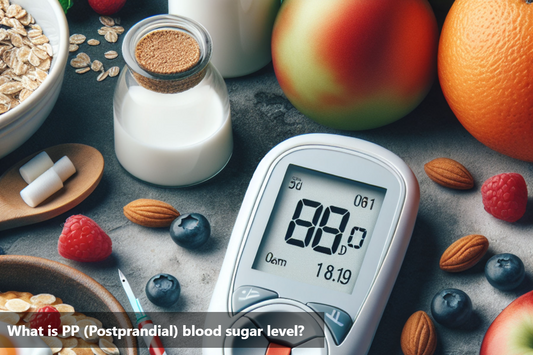Insulin injection sites are specific areas on the body where individuals with diabetes administer insulin injections. Proper knowledge and understanding of insulin injection sites are crucial for effective diabetes management. These sites play a significant role in the absorption and distribution of insulin in the body, impacting the overall control of blood glucose levels.
Choosing the correct insulin injection site is essential to ensure optimal insulin absorption and effectiveness. The commonly used injection sites include the abdomen, thighs, buttocks, and arms. Each site has varying absorption rates, and individuals may have preferences based on their comfort and lifestyle.
Knowledge of insulin injection sites is vital for individuals managing diabetes. Proper site selection and rotation are key practices that can enhance insulin efficiency and overall health outcomes. By incorporating this understanding into diabetes management routines, individuals can better control their blood sugar levels and improve their quality of life.
Common Insulin Injection Sites
In the realm of insulin administration, various insulin injection sites are pivotal for effective diabetes management. The key areas where insulin injections can be administered include the abdomen, thighs, buttocks, and arms which are explained as follows:
Abdomen: The abdomen is a prime site for insulin injections due to its convenient accessibility and consistent absorption rate. When opting for the abdomen, it is advisable to stay at least an inch away from the belly button to ensure proper absorption.
Thighs: Injecting insulin into the thighs is another prevalent site. It is essential to rotate the injection sites within the thigh area to prevent lipodystrophy—a condition characterized by the breakdown of subcutaneous fat tissue.
Buttocks: The buttocks also serve as a viable site for insulin injections. However, it's crucial to avoid injecting near the tailbone and focus on the upper, outer area for optimal absorption.
Arms: Lastly, the arms can be utilized as insulin injection sites. Ensure injections are administered to the back of the arm, between the shoulder and elbow, while rotating sites to maintain effectiveness.
By familiarizing yourself with these common insulin injection sites and practicing proper rotation, you can enhance the efficacy of insulin absorption and contribute to your overall diabetes management regimen.
Best Practices for Rotating Injection Sites
Avoiding Overuse: Rotate injection sites to prevent overuse of any single area, which can lead to lipodystrophy (changes in fat tissue) and uneven insulin absorption.
Maintaining Consistency: Establish a consistent rotation schedule to ensure all injection sites are utilized evenly over time.
Using an Injection Map: Keep track of injection sites using a diagram or map to visually monitor rotation and avoid injecting into the same area repeatedly.
Choosing Different Areas: Rotate injections among different anatomical regions, such as the abdomen, thighs, buttocks, and upper arms, to distribute the injection sites effectively.
Communicating with Healthcare Providers: Discuss rotation strategies with healthcare providers to ensure proper technique and address any concerns or questions regarding injection site management.
Adapting for Physical Activity: Adjust injection sites based on physical activity levels to prevent discomfort or interference with movement.
Complications of Incorrect Injection Sites
Incorrect insulin injection sites can lead to various risks and complications that can significantly impact diabetes management. Consistently using the same insulin injection site or selecting improper sites for insulin administration can result in serious issues.
One common complication of not rotating insulin injection sites is lipohypertrophy, a condition characterized by fatty lumps that develop under the skin. These lumps can affect insulin absorption, leading to unstable blood sugar levels.
Additionally, using the same site repeatedly can cause skin thickening and scarring, making it harder for insulin to be effectively absorbed into the bloodstream.
Improper injection sites, such as injecting insulin too close to a muscle or a joint, can result in inconsistent insulin absorption rates. This can lead to unexpected fluctuations in blood sugar levels, making it challenging to maintain proper glycemic control.
-
Furthermore, injecting insulin into areas with reduced blood flow can delay absorption, causing delayed effects on blood sugar.
It is crucial to rotate insulin injection sites regularly and choose appropriate sites for insulin administration to minimize the risk of complications. Proper site rotation can enhance the effectiveness of insulin therapy and contribute to better diabetes management.
Exploring Sites for Insulin Injections
Understanding the significance of proper rotation of insulin injection sites is crucial for individuals managing diabetes effectively. By rotating where insulin is administered on the body, several key benefits can be achieved that contribute to overall health and well-being.
Incorporating proper rotation of insulin injection sites into a diabetes management routine is a proactive step towards maintaining stable blood sugar levels and reducing the potential for complications over time. By prioritizing this practice, individuals can enhance the effectiveness of their insulin therapy and ultimately improve their quality of life while managing diabetes.
Remember, consistent monitoring and adherence to best practices for insulin injection site rotation are essential for long-term diabetes management success.
This Blog post is an initiative by DiabeSmart, to provide accurate and Nutritionist / Doctor approved information related to Diabetes. DiabeSmart is India's first Food brand designed specifically for Diabetics, that has been clinically tested on Diabetics and Pre-Diabetics to deliver 55% - 70% lower Sugar spikes. DiabeSmart is part of Lo! Foods - India's leading brand for Everyday Functional Health foods.













